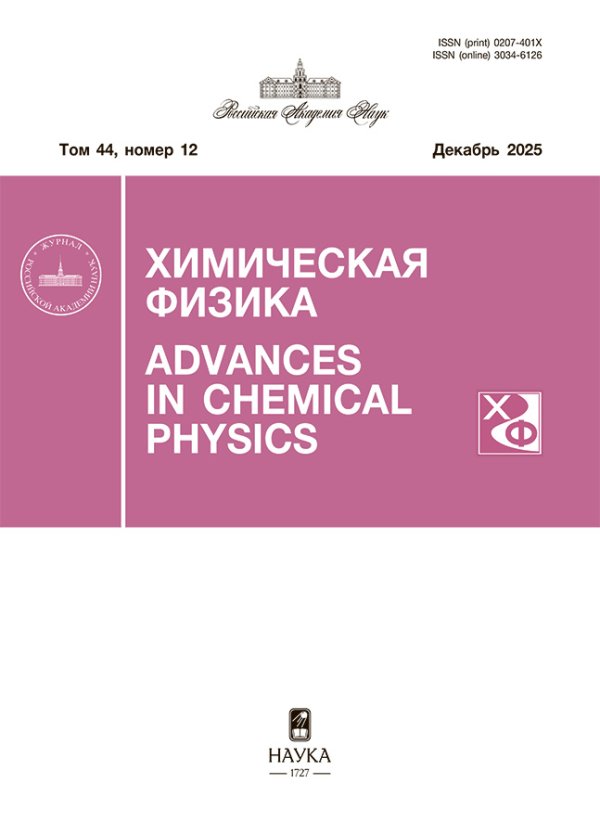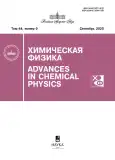Study of Properties of Explosive Transition in Nanocarbon-Modified Complex Cobalt Compounds under Laser Irradiation
- Authors: Batalov S.V.1, Ustinov S.S.1, Ovcharov I.V.1, Alpatov A.A.1, Maltsev I.A.1
-
Affiliations:
- Russian Federal Nuclear Center – Zababakhin All-Russia Research Institute of Technical Physics
- Issue: Vol 44, No 9 (2025)
- Pages: 55-61
- Section: Combustion, explosion and shock waves
- URL: https://bakhtiniada.ru/0207-401X/article/view/308824
- DOI: https://doi.org/10.31857/S0207401X25090049
- ID: 308824
Cite item
Abstract
The results of initiation of pressed samples of a high explosive (HE), astralene-modified NCP ((5-nitrotetraazolato-N2)pentaammine cobalt (III) perchlorate), by radiation of semiconductor laser diodes are presented.Introduction of 0.2 wt. % of astralene into the NCP allows for a 20-fold decrease in the threshold initiation energy. It is shown that the increase of the diameter of the irradiation area of astralene-modified NCP samples from 0.13 to 2.77 mm results in the decrease of the threshold initiation energy density from 1.53 down to 0.31 J/cm2.
Keywords
About the authors
S. V. Batalov
Russian Federal Nuclear Center – Zababakhin All-Russia Research Institute of Technical Physics
Email: vniitf@vniitf.ru
Snezhinsk, Russia
S. S. Ustinov
Russian Federal Nuclear Center – Zababakhin All-Russia Research Institute of Technical Physics
Email: vniitf@vniitf.ru
Snezhinsk, Russia
I. V. Ovcharov
Russian Federal Nuclear Center – Zababakhin All-Russia Research Institute of Technical Physics
Email: vniitf@vniitf.ru
Snezhinsk, Russia
A. A. Alpatov
Russian Federal Nuclear Center – Zababakhin All-Russia Research Institute of Technical Physics
Email: vniitf@vniitf.ru
Snezhinsk, Russia
I. A. Maltsev
Russian Federal Nuclear Center – Zababakhin All-Russia Research Institute of Technical Physics
Author for correspondence.
Email: vniitf@vniitf.ru
Snezhinsk, Russia
References
- Zegrya G.G., Savenkov G.G., Zegrya A.G. et al. //Technical Phys. 2020. V. 65.Р. 1636.
- Fast HE detonation. Special modes of detonation. Collected scientific papers / Ed. Tarzhanov V.I. Snezhinsk: RFNC-VNIITF, 1998 [in Russian].
- Aleksandrov E.I., Voznyuk A.G., Tsipilev V.P.Combust.Explos. Shock Waves. 1989. V. 25. № 1. P. 1.
- Combustion of condensed systems. Collectedpapers/ Ed. Merzhanov A.G. Chernogolovka: USSR Academy of Science Branch Institute of Chemical Physics, 1997. Р. 5 [in Russian].
- Aduev B.P., Nurmukhametov D.R., Belokurov G.M., Zvekov A.A., Nelyubina N.V. // Combust. Explos. Shock Waves. 2019. V. 55. № 2. P. 237.
- Damm D., Maiorov M. // Proc. SPIE. 2010. V. 7795. Article 779502.
- Abdrashitov G.O, Averyanov A.O., Balmakov M.D., Ilyushin M.A. et al. // Russ. J. Appl. Chem. 2019. V. 92. № 2. P. 248.
- Batalov S.V., Ageev M.V., VedernikovYu.N.,Fedotov S.A., Smirnov A.V. Initiating compound and method of its preparation: Patent № 2729490 Russian Federation. 2020.
- Ponomarev A.N., Yudovich M.E. Multilayer carbon nanoparticles of fulleroid-type with a toroidal shape: Patent № 2397950 Russian Federation. 2010.
- Belousov V.P., Belousova I.M., Budtov V.P. et al. // J. Opt. Technol. 1997. V. 64. № 12. Р. 3 [in Russian].
- Didyukov A.I., KulaginYu.A., Shelepin L.A., Yarygina V.N. // Sov. J. Quantum Electron. 1989. V. 19. № 5. P. 578.
Supplementary files










